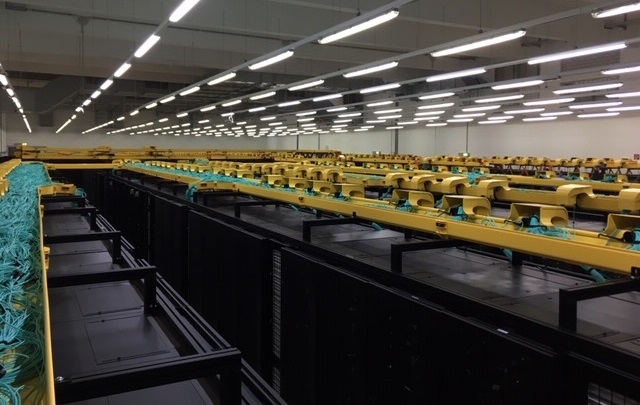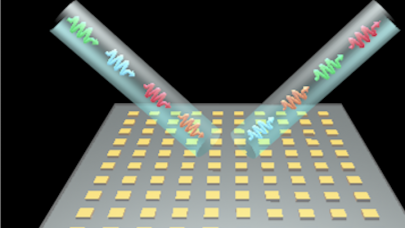The 31st Supercomputing Conference (SC) – commemorating 30 years since the first Supercomputing in 1988 – kicked off in Dallas yesterday, taking over the Kay Bailey Hutchison Convention Center and much of the surrounding area. That means there’s another Top500 list to dive into and discuss. If you follow the space closely there were no major surprises, yet a close inspection of the list yields interesting findings and a few firsts. The United States, despite continuing to lose ground in system share, had a particularly good showing, nabbing the top two spots and standing up the world’s first petaflops Arm-powered supercomputer.
Starting from the top, DOE CORAL siblings Summit and Sierra have both upped their Linpack scores and are enjoying their number one and two spots. Built by IBM, Nvidia and Mellanox, the supercomputers entered the list six months ago with Summit taking highest honors and Sierra in third. Big sister Summit, installed at Oak Ridge, got a performance upgrade as we’d previously reported it would, climbing from 122.3 to 143.4 petaflops. It follows that Sierra, installed at number three six months ago, would likely get one as well (and it did), stepping from 71.6 to 94.6 petaflops.

Summit has also had its power efficiency optimized for the latest Linpack lineup, bumping it from 13.89 gigaflops/watts to 14.67 gigaflops/watts. Sierra didn’t include power metrics when it debuted six months ago, but now Livermore is reporting an energy efficiency of 12.72 gigaflops/watts. (We’ll look at what that means for their Green500 rankings in a moment.)
Sierra’s flops fortification was sufficient to knock China’s Sunway TaihuLight supercomputer from second to third place. Installed at the National Supercomputing Center in Wuxi, TaihuLight debuted at the top of the June 2016 listing. It is comprised almost entirely of Chinese-made indigenous computing technologies.
Following in fourth place is China’s other mega-system, the Tianhe-2A (Milky Way-2A), which achieved 61.4 petaflops thanks to an upgrade earlier this year that swapped out 2012-era Intel Xeon Phi coprocessors with proprietary Matrix-2000 accelerators. Before the U.S. debuted Summit and Sierra in June 2018, China had enjoyed a long-running lead atop the list, and claimed both the first and second spots for three list iterations (June 2016 through November 2017).
Piz Daint, a Cray XC50 system installed at the Swiss National Supercomputing Centre (CSCS) in Lugano, Switzerland, moves up one spot into fifth place thanks to an upgrade that increased its Linpack performance from 19.6 to 21.2 petaflops. The boost secures Piz Daint’s place as fastest European HPC system, although it would have maintained that status even without the additional cores (but just barely).
Moving up three spots into sixth position is Trinity, a Cray XC40 system operated by Los Alamos National Laboratory and Sandia National Laboratories. Trinity upped its performance from 14.1 to 20.2 petaflops. It is the only system in the top 10 to employ Intel Xeon Phi processors.
The AI Bridging Cloud Infrastructure (ABCI) deployed at the National Institute of Advanced Industrial Science and Technology (AIST) in Japan has moved down two spots into seventh position with a Linpack mark of 19.9 petaflops. Made by Fujitsu the system includes Xeon Gold processors and Nvidia Tesla V100 GPUs.

Welcomed into the top 10 pack as the lone new entrant is SuperMUC-NG, in sixth position with 19.5 petaflops, provided by more than 305,000 Intel Xeon 8174 cores. This is the new fastest system in Germany, built by Lenovo and installed at the Leibniz Supercomputing Centre (Leibniz-Rechenzentrum) in Garching, near Munich. It is the only system in the top 10 to use Intel’s Omni-Path interconnect.
Boasting 26.9 peak petaflops when it launched (compared to Piz Daint’s 25.3), SuperMUC-NG had a shot at overtaking Piz Daint for title of fastest supercomputer on the European block. However, even if Piz Daint hadn’t have added additional cores and flops, it still would have kept its lead (with 19.59 petaflops versus SuperMUC-NG’s 19.48 petaflops).
Titan, the Cray XK7 supercomputer at Oak Ridge National Laboratory, moves down three spots into ninth place. The long-running U.S. record-holder debuted on the list at number one six years ago. 18,688 AMD Opterons and 18,688 Nvidia K20X GPUs provide Titan with 17.5 petaflops of Linpack goodness.
In tenth place is Sequoia, delivering 17.2 petaflops. An IBM BlueGene/Q supercomputer, Sequoia has been a critical asset of DOE’s Lawrence Livermore National Laboratory since 2011.
There are 153 new systems on the list. Lassen, in 11th place, is one of them. Lassen is an IBM Power9 System (S922LC), installed at Lawrence Livermore National Laboratory. Powered by Nvidia V100s, and networked with dual-rail Mellanox EDR Infiniband, Lassen achieves 15.4 petaflops.
New additions SuperMUC-NG and Lassen mean that NERSC’s Cori supercomputer slips from tenth to twelve position. Cori is a Cray XC40, Intel Phi-based system; it is the primary HPC resource for DOE’s Lawrence Berkeley National Lab. Cori first entered the list at number five two years ago and has maintained its 14.01 Linpack petaflops.
Other notable new entrants are Taiwania 2, Electra and Eagle, ranked at 20 (9 petaflops), 33 (5.4 petaflops) and 35 (4.85 petaflops), respectively. Installed at the Taiwan National Center for High-performance Computing, Taiwania was manufactured by Quanta Computer in collaboration with Taiwan Fixed Network and ASUS Cloud, and consists of Xeon Gold 6154 processors and Nvidia Tesla V100 GPUs. Electra and Eagle are both built by HPE using Xeon Gold processors; the former is located at NASA/Ames Research Center and the latter at National Renewable Energy Laboratory.
 Last but not least is notable first-timer Astra, the new Arm-based HPE-built supercomputer, deployed at Sandia National Laboratories. Astra gets the claim to fame of being the first Arm-powered supercomputer to make it onto the Top500. Seeing multiple nations betting on Arm for their exascale targets well before Arm had reached petascale has struck me as risky. As large production systems like Astra in the US, Islambad in the UK and a CEA-run system in France are stood up, Arm server chips will have their proving ground. Astra leveraged 125,328 Marvell Cavium ThunderX2 cores to deliver 1.5 High Peformance Linpack petaflops. It enters the list at number 203.
Last but not least is notable first-timer Astra, the new Arm-based HPE-built supercomputer, deployed at Sandia National Laboratories. Astra gets the claim to fame of being the first Arm-powered supercomputer to make it onto the Top500. Seeing multiple nations betting on Arm for their exascale targets well before Arm had reached petascale has struck me as risky. As large production systems like Astra in the US, Islambad in the UK and a CEA-run system in France are stood up, Arm server chips will have their proving ground. Astra leveraged 125,328 Marvell Cavium ThunderX2 cores to deliver 1.5 High Peformance Linpack petaflops. It enters the list at number 203.
The entry point for the Top100 has reached 1.97 petaflops and there are now 427 systems with performance greater than a petaflops on the list (up from 272 six months ago).
China-U.S. Standing
China continues to lead in system share, while the U.S. maintains the aggregate performance edge it regained six months ago with the entry of its first two CORAL systems. China now claims 229 systems (45.8 percent of the total), while U.S. share fell has dropped to the lowest ever: 108 systems (21.6 percent). That wide delta in system count is offset by the U.S. having the top two systems and generally operating more powerful systems (and more real HPC systems, as opposed to Web/cloud systems), allowing the U.S. to enjoy a 38 percent performance share, compared to China’s 31 percent. Related to the rise in these non-HPC systems, Gigabit Ethernet ropes together 254 systems. 275 systems on the list are tagged as industry.
Aggregate List Performance, Green500 & HPCG
The 52nd Top500 list holds a combined performance (rMax) of 1.41 exaflops. That is an 18.3 percent increase from six months ago, when the total performance of all 500 systems first crossed the exaflops barrier, amassing 1.22 exaflops of total aggregate performance. The total theoretical peak carried by the newly published list is 2.21 exaflops, up from 1.92 exaflops six months ago.
The Green500 has been integrated into the Top500 reporting process and HPCG is also included in the list now. Summit and Sierra hold the top positions on the HPCG ranking ahead of Japan’s K computer at number three. Newcomer Astra also achieved a notable HPCG result, coming in 36th on that list.
On the Green500, Summit and Sierra achieved a position of three and seven, respectively [with 14.67 gigaflops/watt and 12.72 gigaflops/watt, as reported up above].
The top two Green500 systems are Shoubu system B and DGX Saturn, ranked 374 and 373 on the Top500. Shoubu system B, made by PEZY/Exascalar and located at RIKEN, achieves 17.6 gigaflops/watt; while DGX Saturn, made by Nvidia for Nvidia, delivers 15.1 gigaflops/watt.


























































